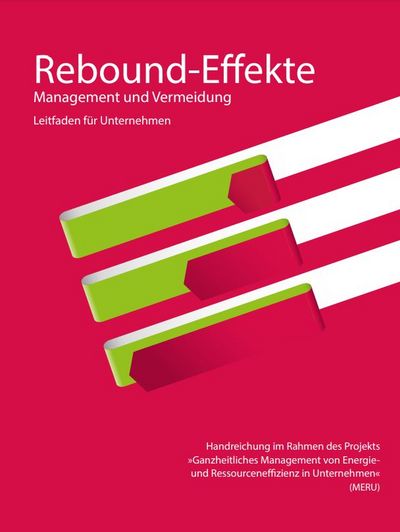Rebound effects: Management and avoidance Guide for companies
Using energy and materials efficiently benefits companies and the environment. However, if companies implement efficiency measures that save materials or energy in their production, for example, new resource consumption can arise as a side effect: For example, if costs fall as a result of the reduced consumption and companies use the saved funds for investments or expand production. This phenomenon is called the rebound effect.
This boomerang effect means that despite increased resource efficiency, absolute material and energy consumption as well as greenhouse gas emissions increase or at least do not decrease to the necessary extent. As a result, the economic sector neither achieves its climate targets nor can the overuse of natural resources be sufficiently reduced.
The guide "Rebound Effects: Management and Prevention" is designed to help companies understand the problem of rebound effects. It helps to better understand and evaluate the phenomenon. It also provides information on how companies can mitigate rebound effects through holistic management of energy and materials and thus reduce their absolute consumption and emissions. In this way, the guide also provides support in fulfilling statutory energy efficiency obligations. After all, rebounds are lost opportunities for ecological improvement. Avoiding them helps to make organizations more environmentally friendly and less dependent on energy and raw materials.



